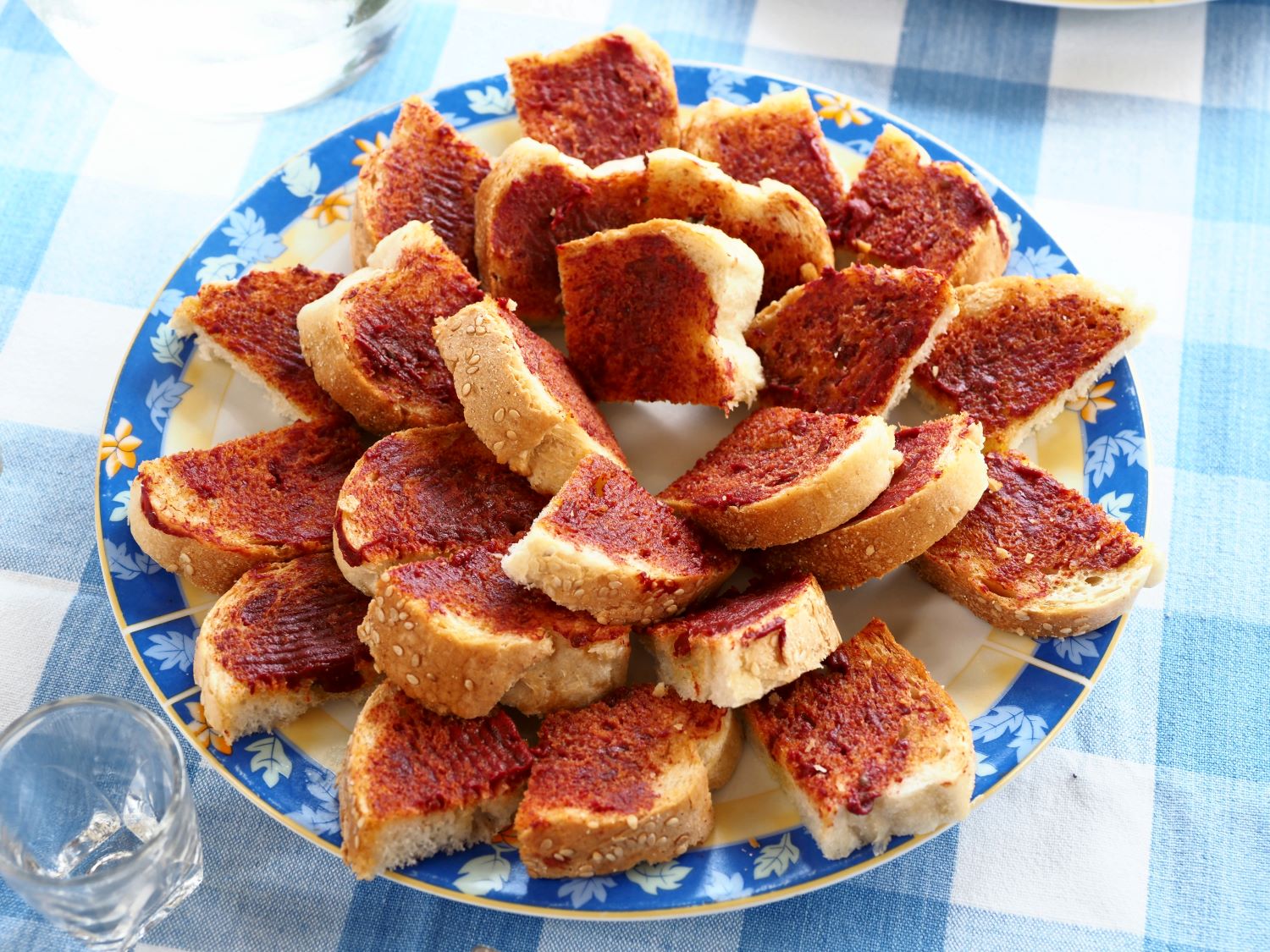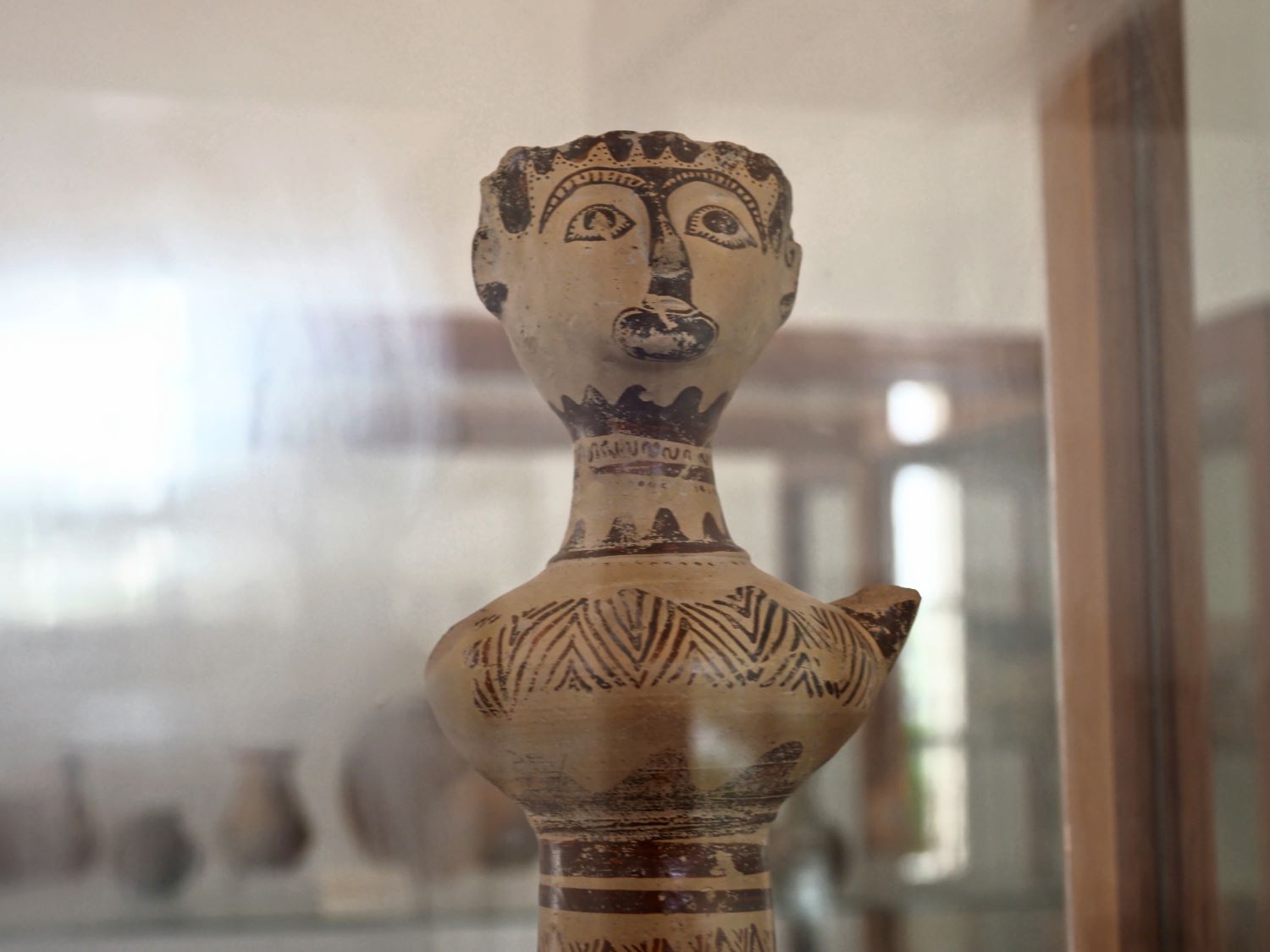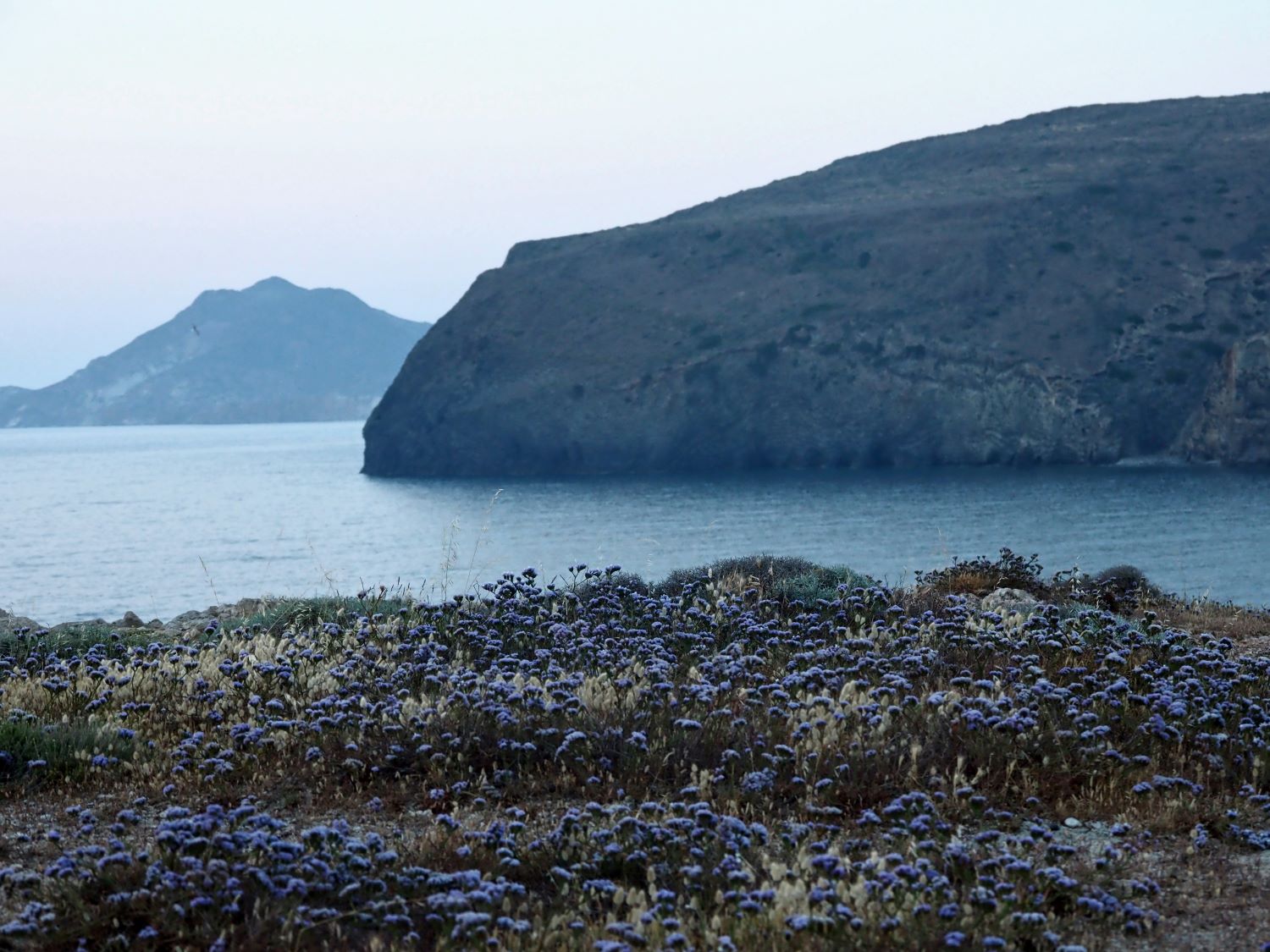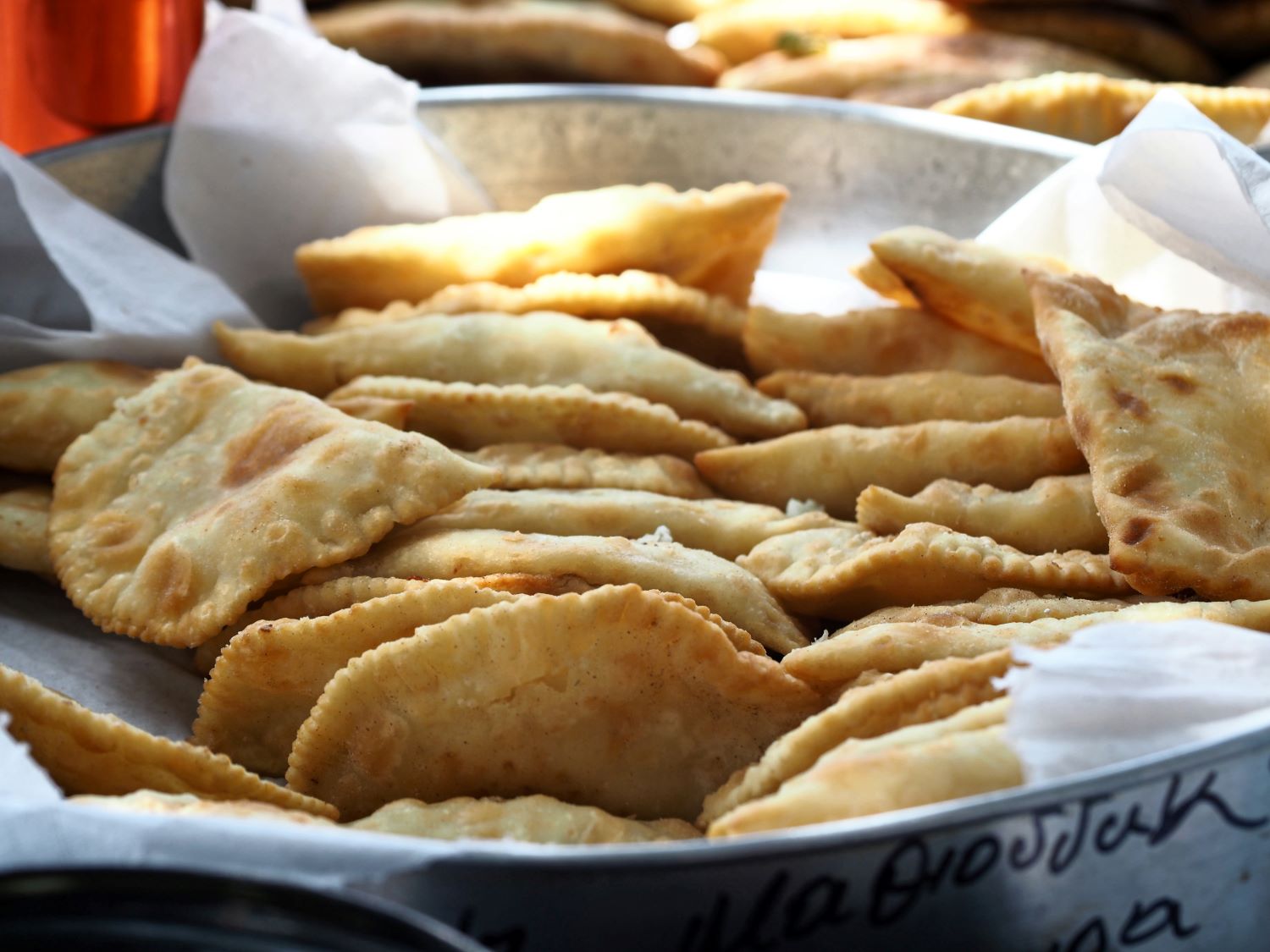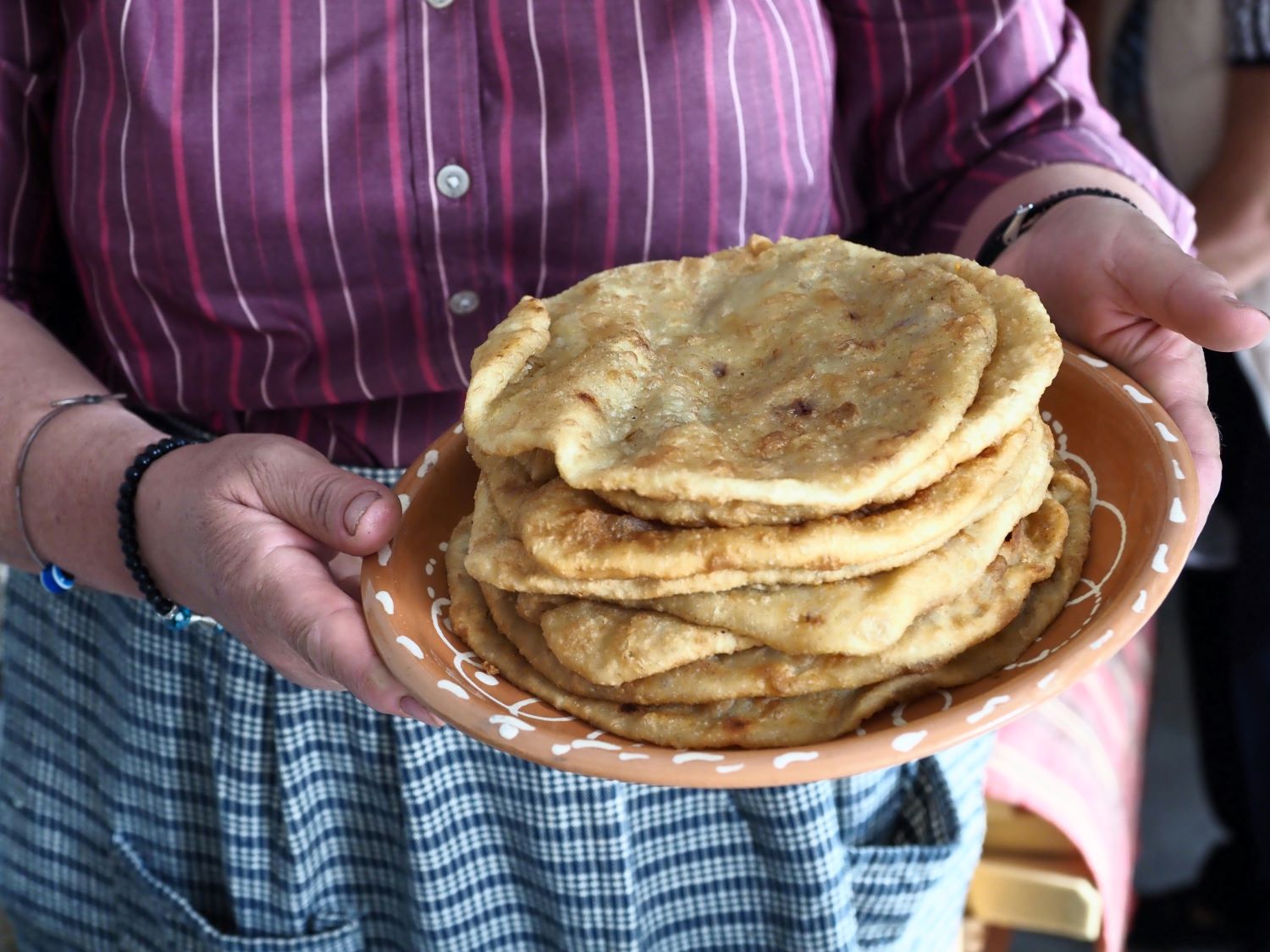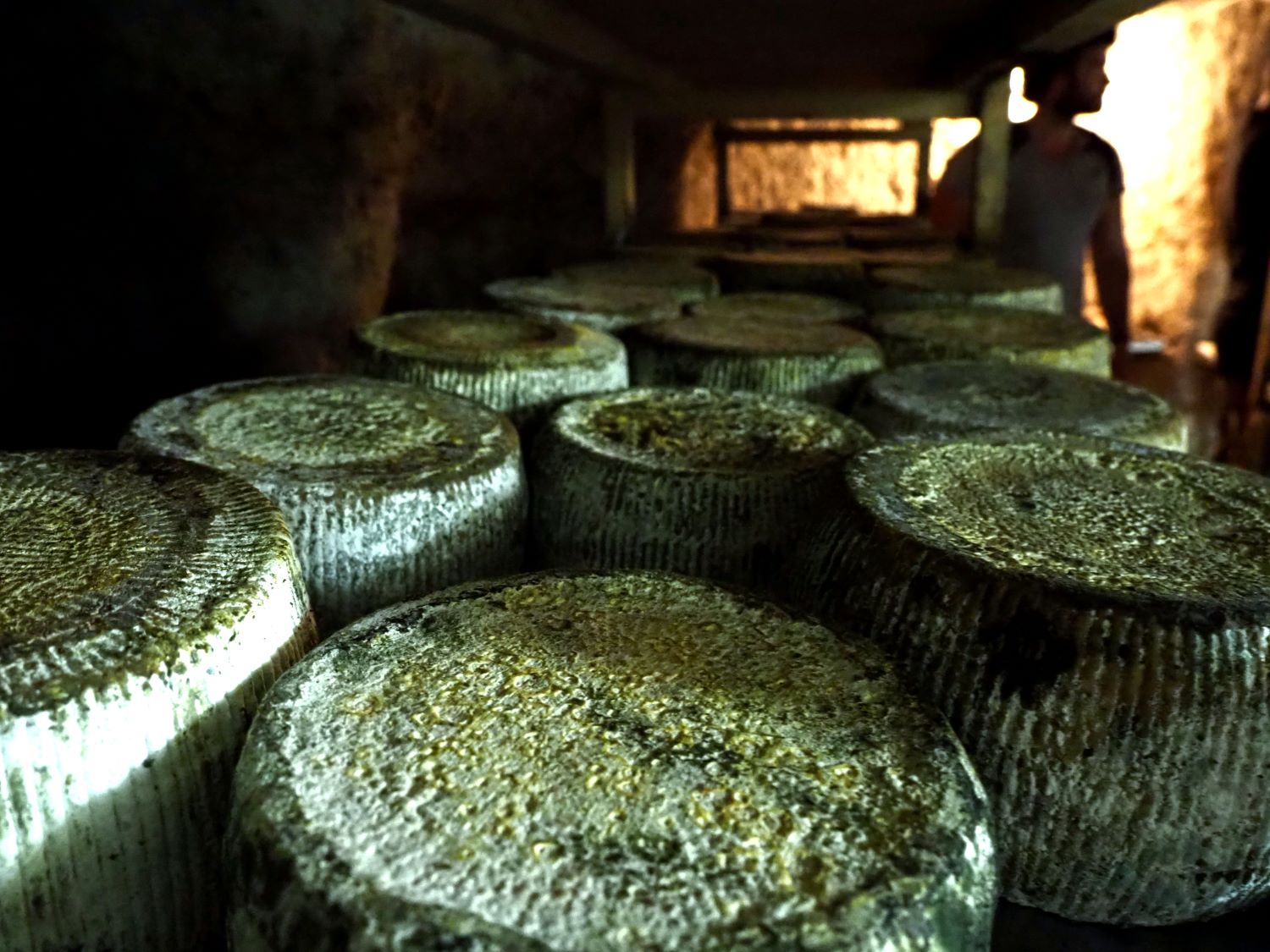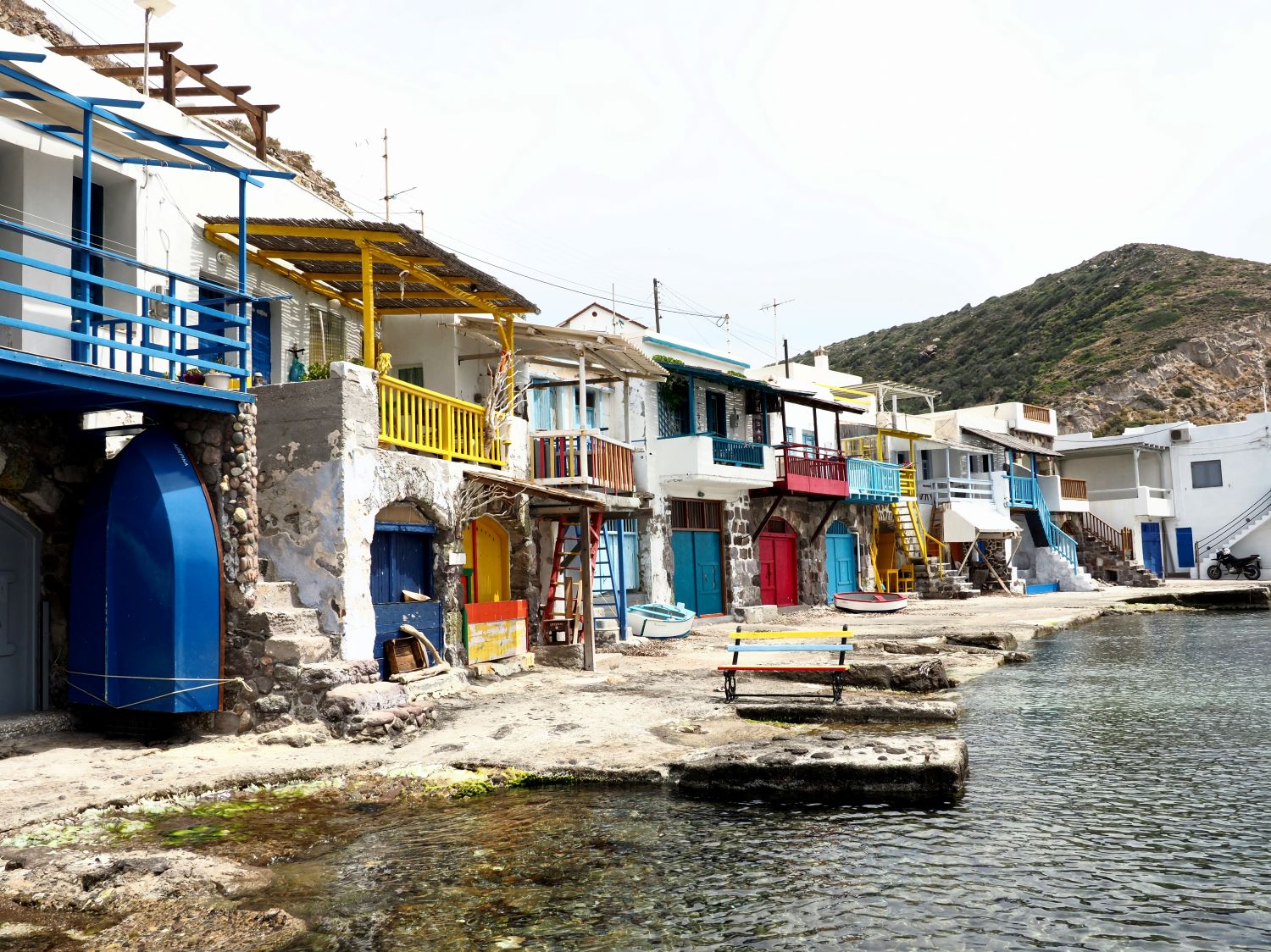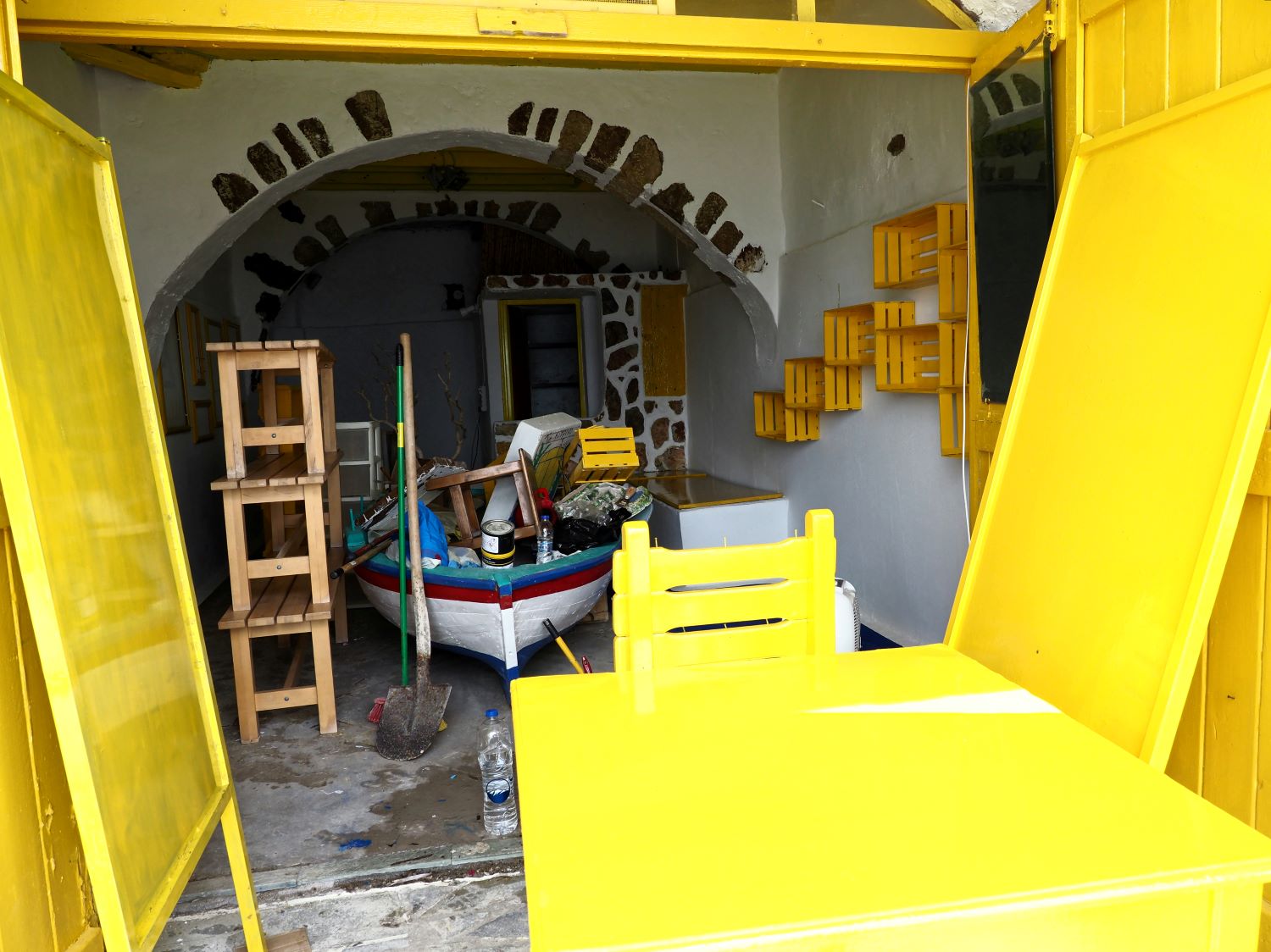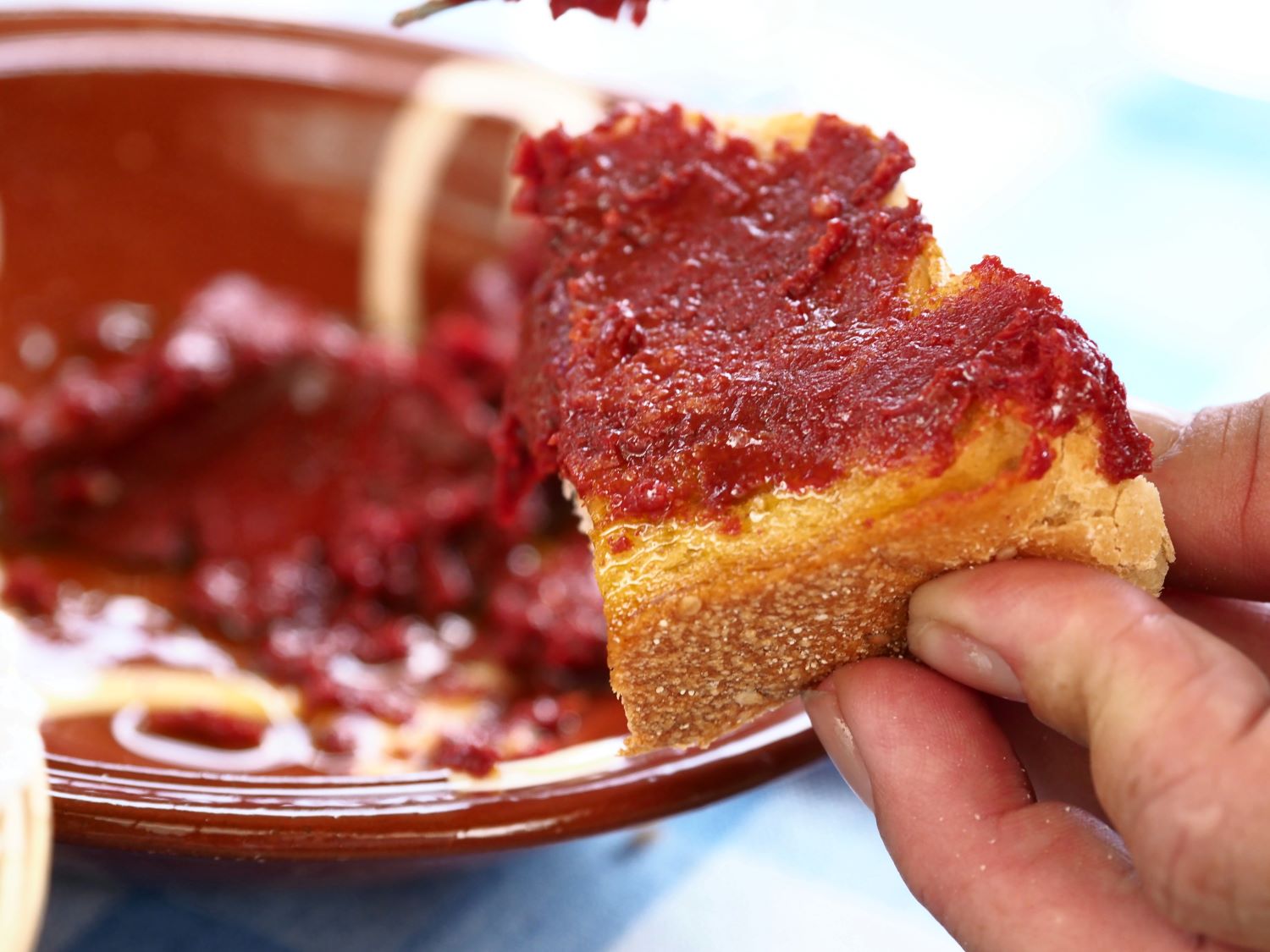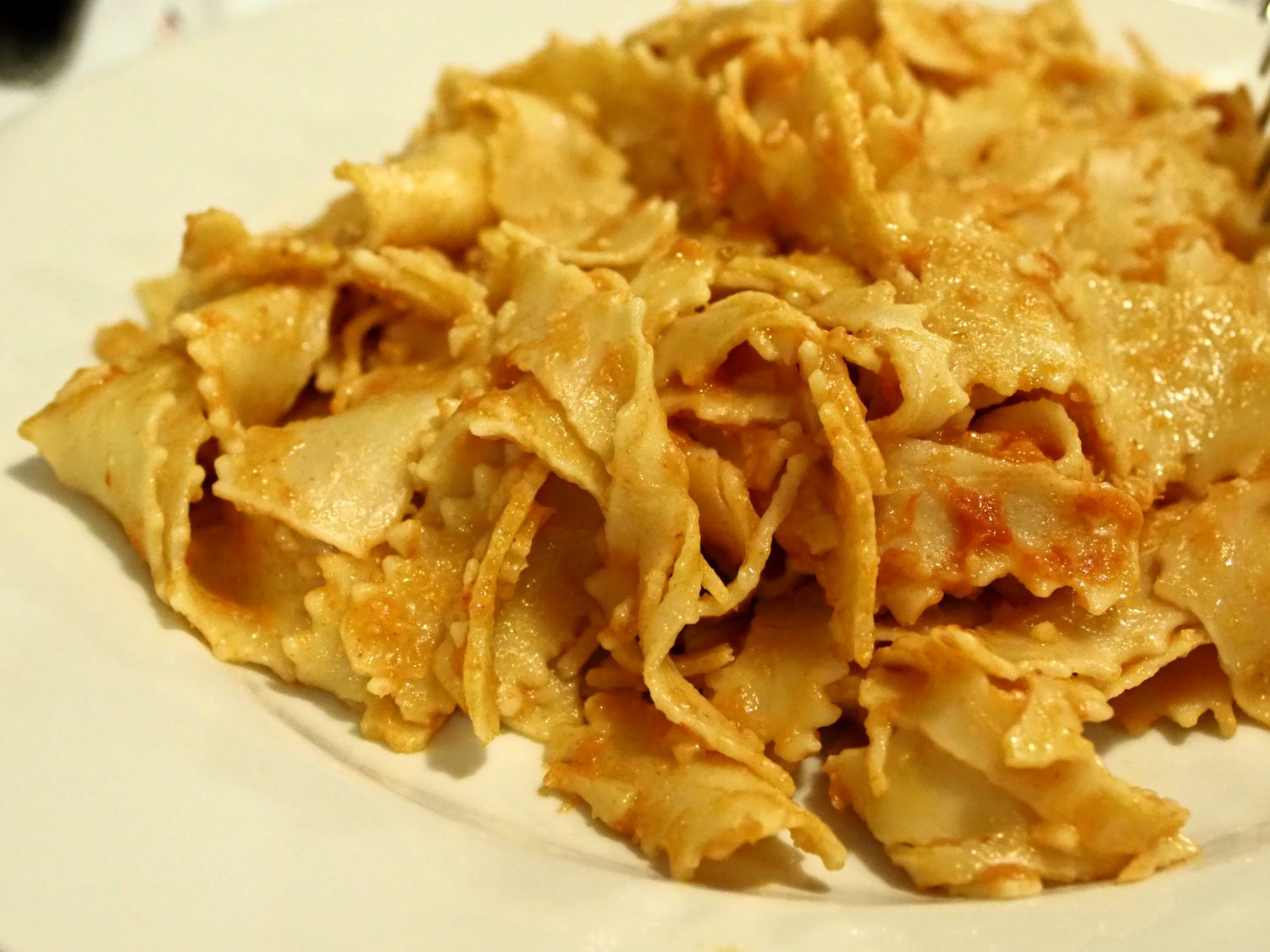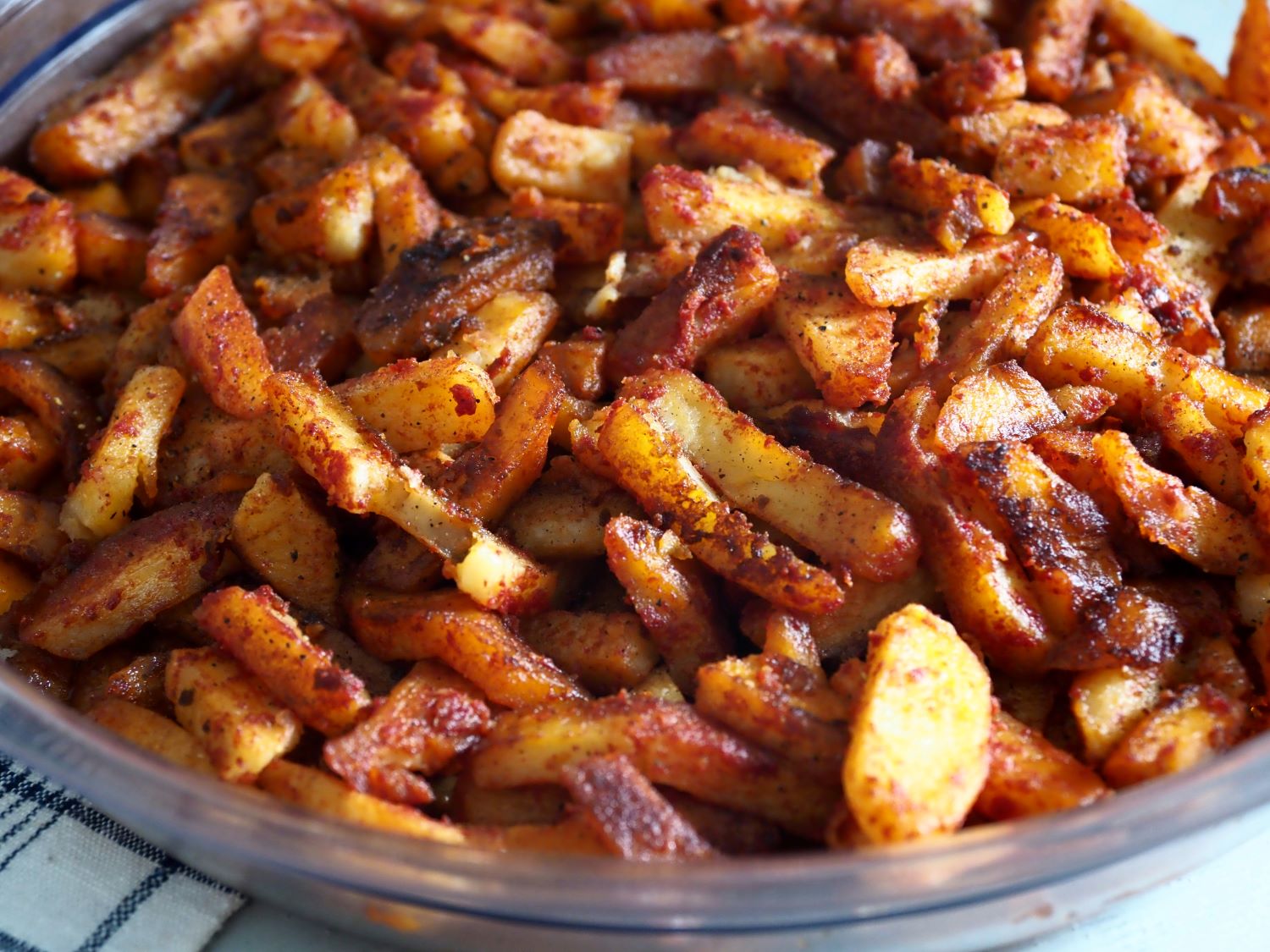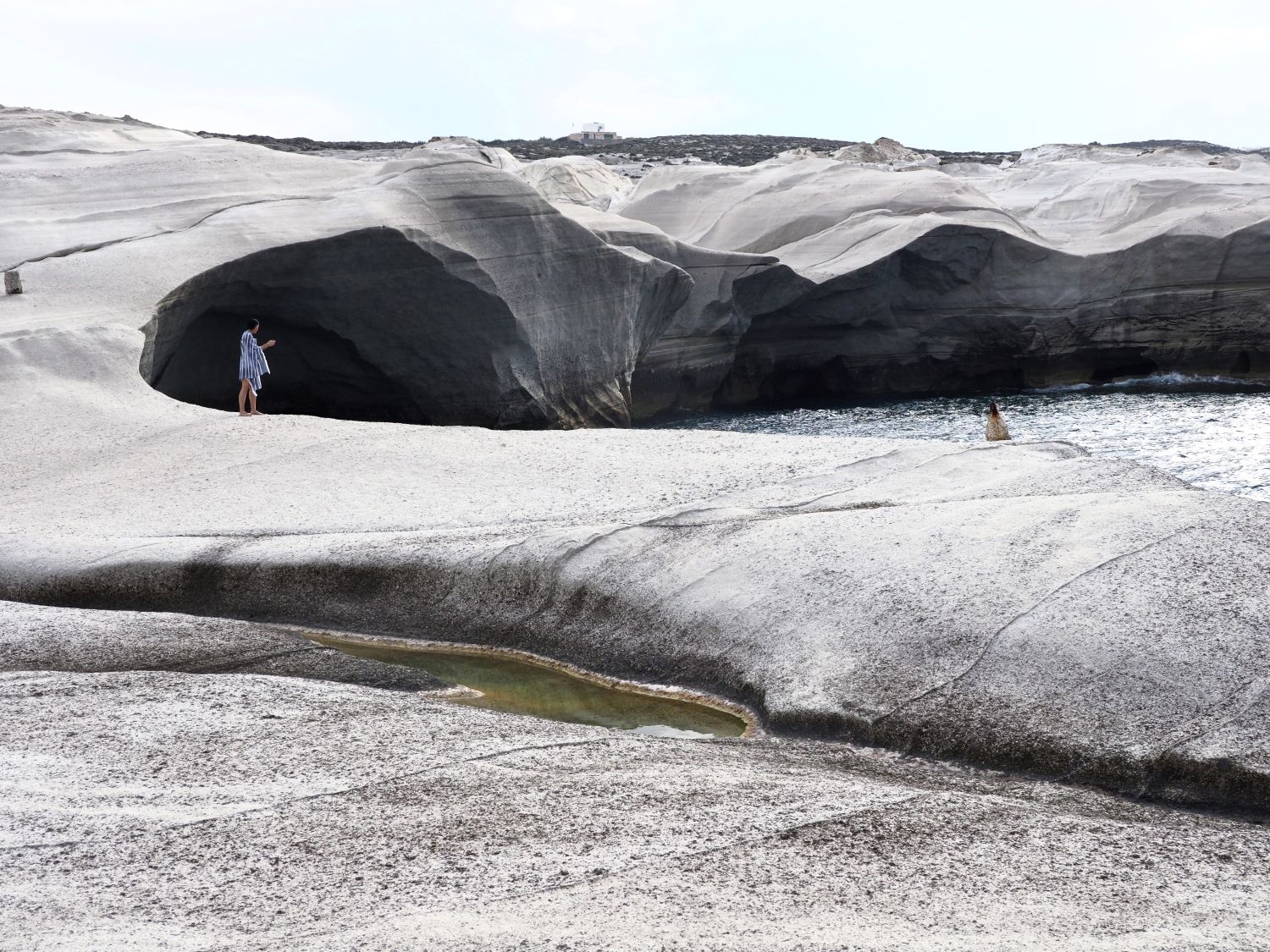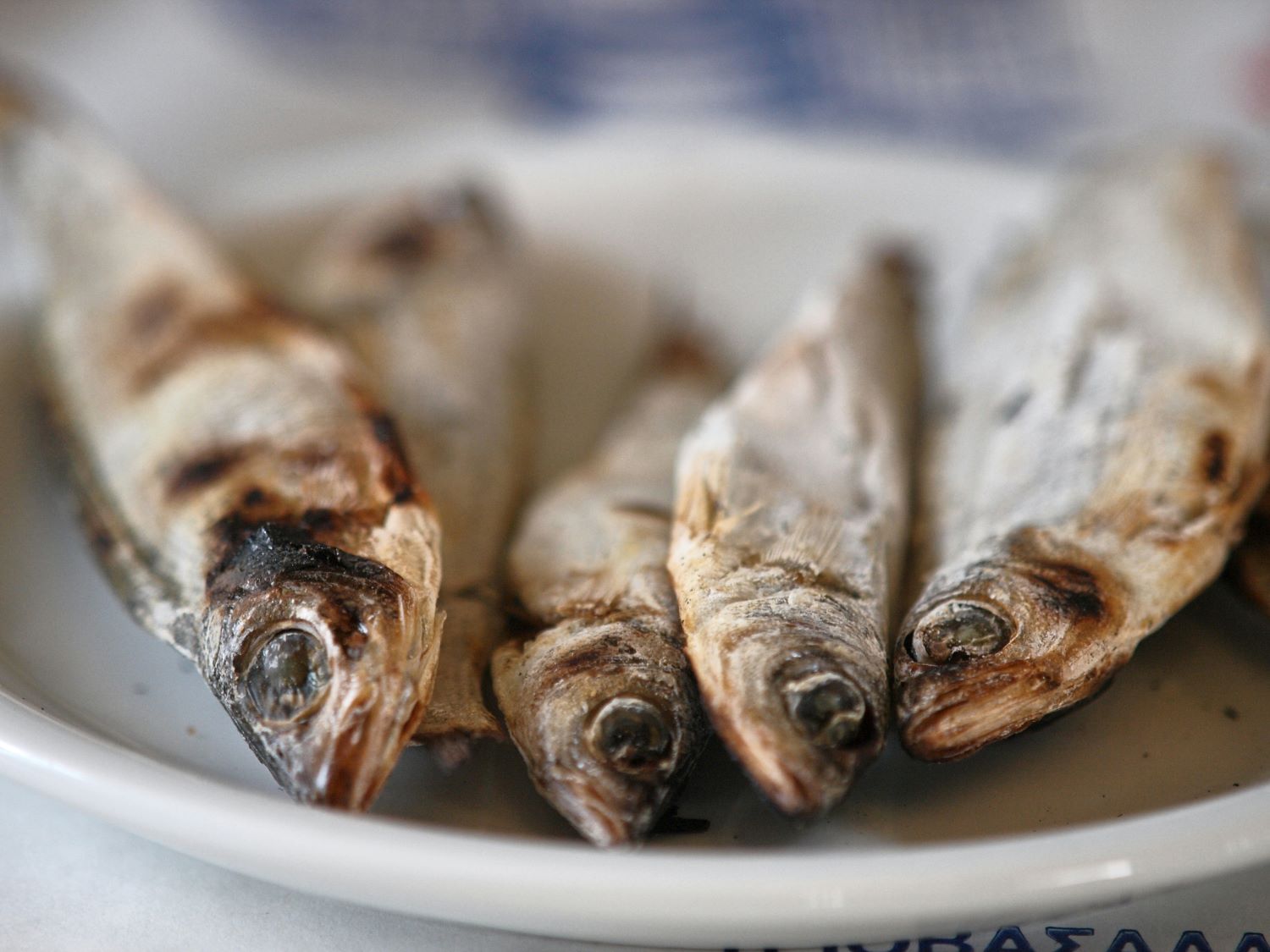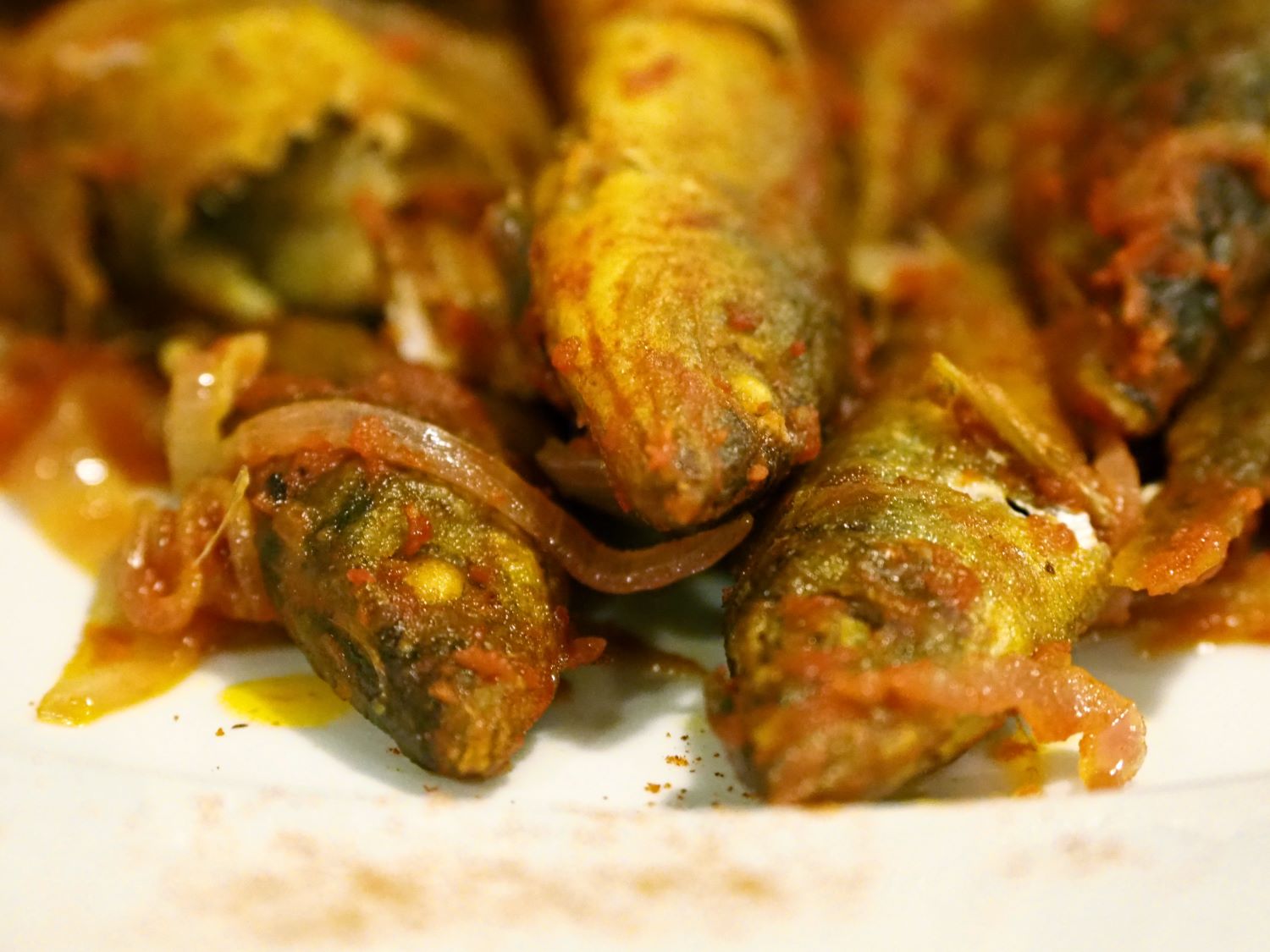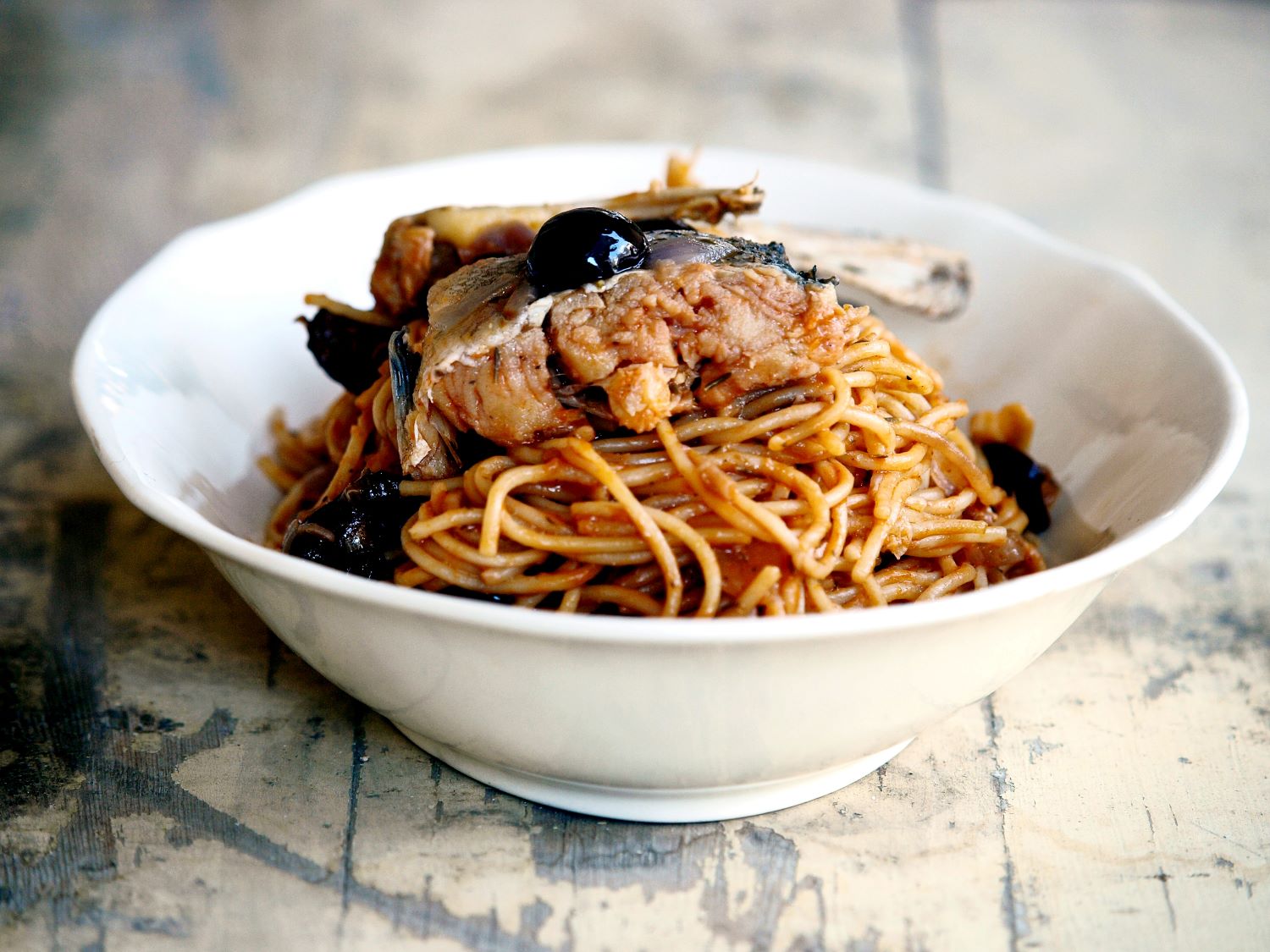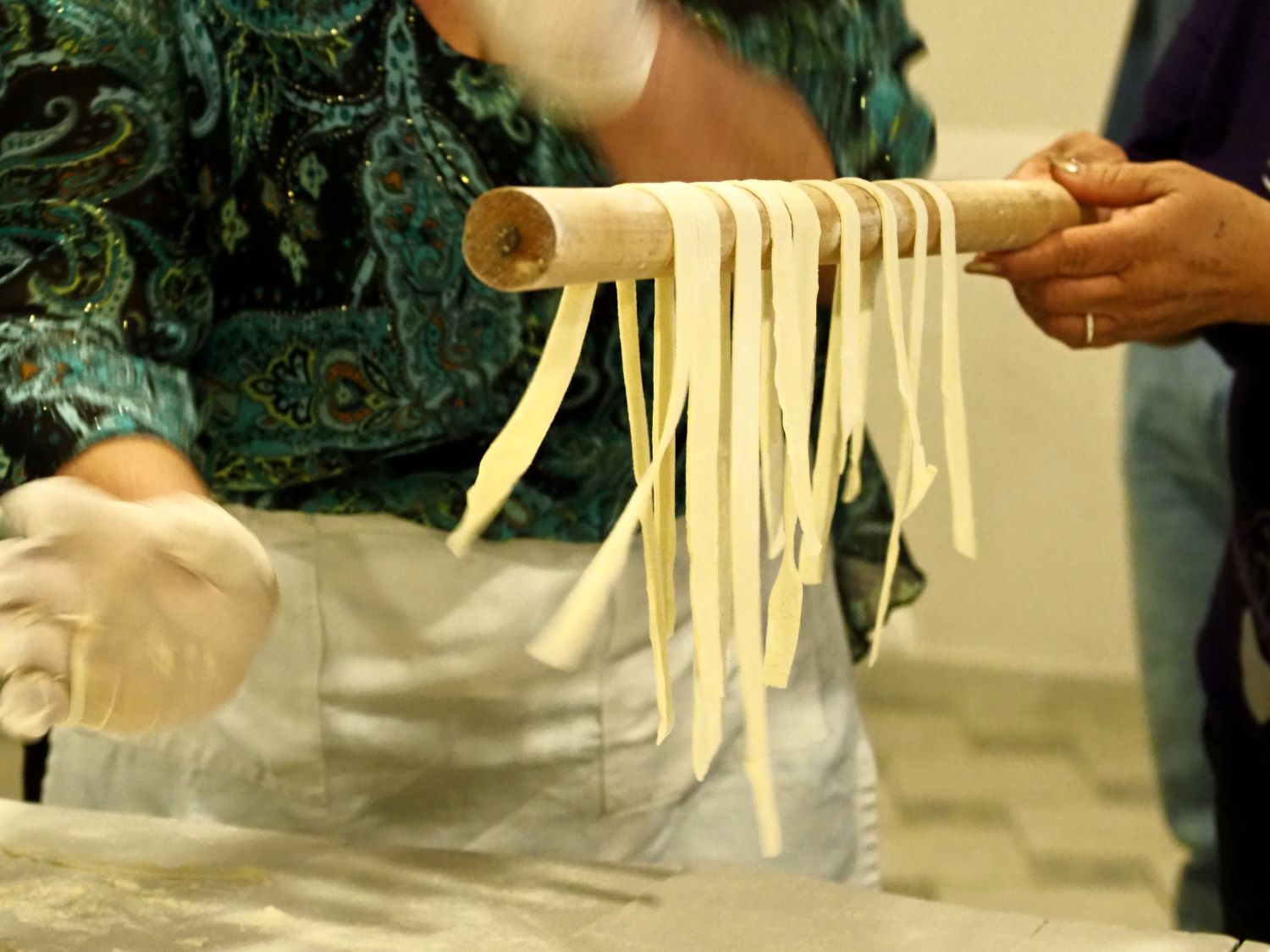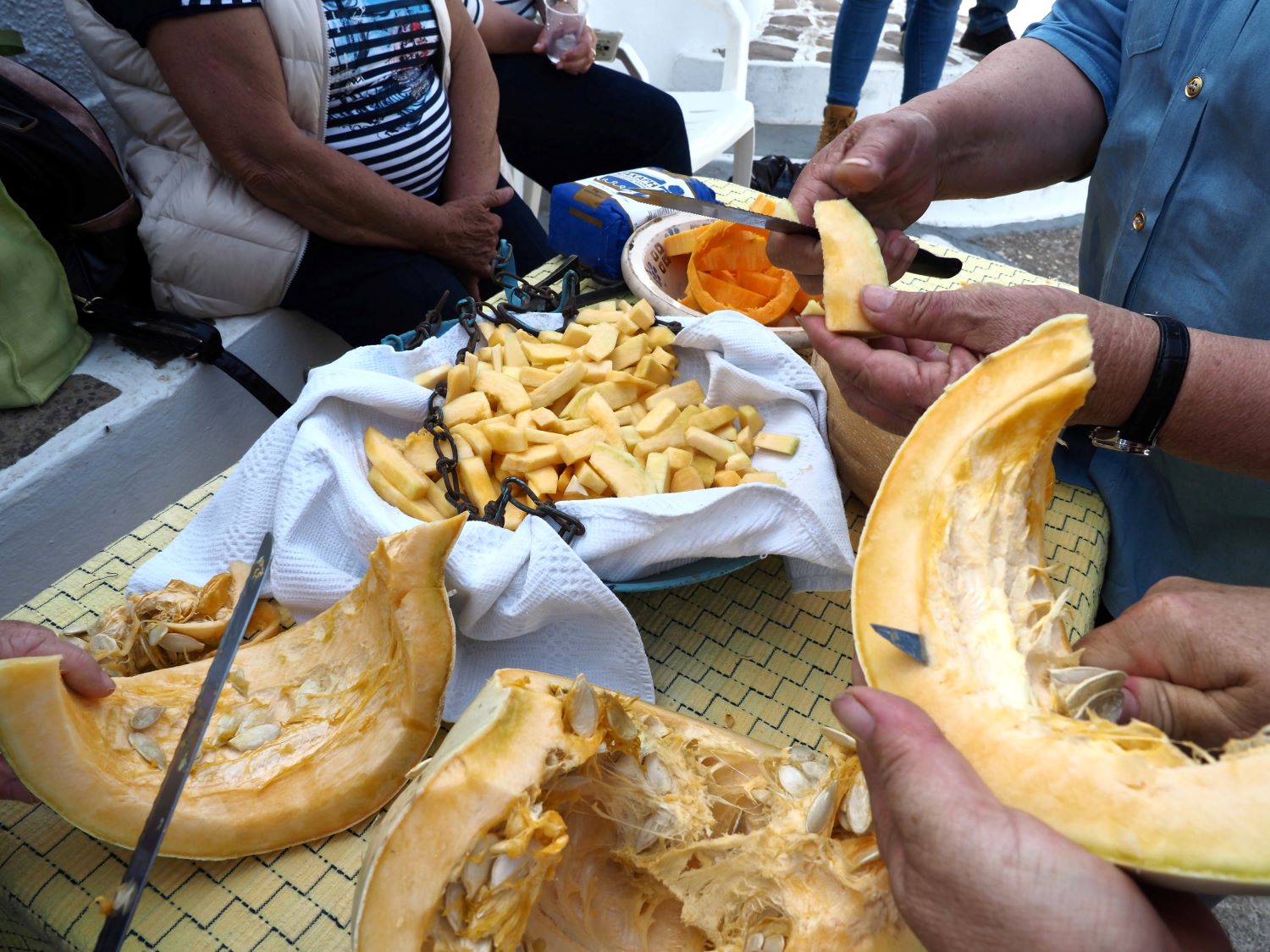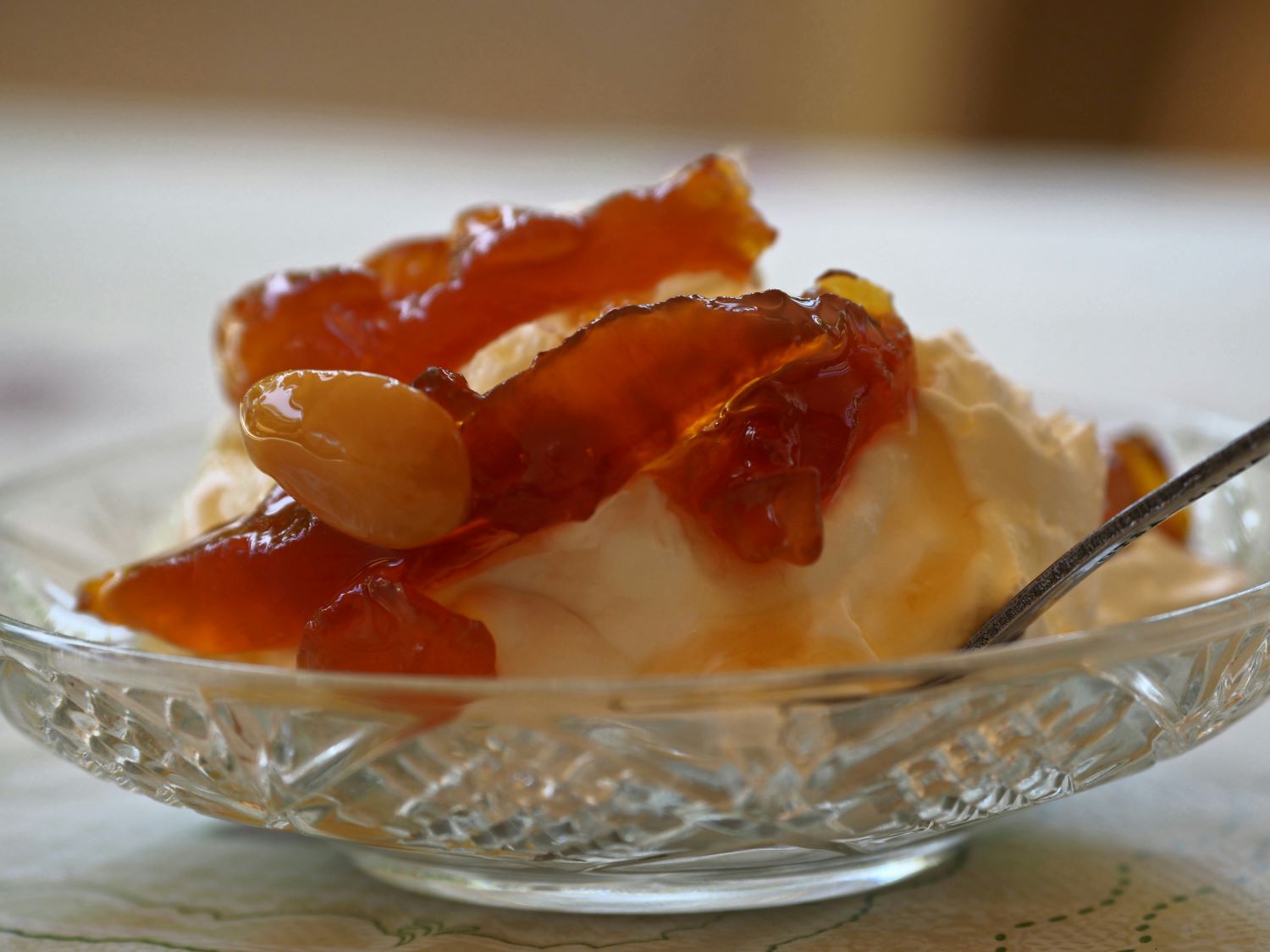In Milos, I experience a juxtaposition between the ‘primal’ Lady of Phylakopi and the ‘sophisticated’ Aphrodite. This is a portrait of elegance, authenticity, beauty, taste, and lifestyle. The celestial 2,000 year old Aphrodite of glistening white marble now majestically holds court in her new home, the Louvre Museum in Paris, one of the centres of modern European civilisation. The earthen Lady of Phylakopi, sits in the diminutive museum of Plaka in Milos, essentially at the heart of the Aegean or more precisely, at the birthplace of our European civilisation. Both are masterpieces born from explosions of culture: The rather crude earthenware idol from the Bronze Age (15thC. BC) and the exquisitely carved statue of the Hellenistic (2ndC BC) period.
Mirroring contrasting forms of these two goddesses are the flavours that erupt in Milos today; primal, earthly, authentic, real, vibrant, beautiful, spiced with the saltiness and vitality of the Archipelago.
The climate of Milos is vibrant, akin to the doors of the wire trellises in Klima. It is essentially another minor miracle of Milos’ subterranean world, comparable to the Catacombs or the spot where Aphrodite’s statue was found further up on the slope that descends to the sea, or the city of Phylakopi, concealed beneath the weight of centuries on white rocks, from where the statuette of the Lady arose.
Over many millennia, Milos’s subterranean world holds unseen riches, precious and delectable. Today, in the depths of the dark cool catacomb, maturing with the moist embrace of time, is the fresh manoura goat’s milk cheese. It steadily matures, assuming a myriad of forms and flavours, hardening into melichloro (up to 6 months of maturation), lathotiri (an oily cheese), and ultimately, the renowned aged ‘sklirotiri’ the peppery hard cheese of Milos, the cornerstone of many a sumptuous or simple meal on the island.
In Milos, there is a saying: if you have flour, oil, onions, and cheese in your kitchen, you will never be hungry. At the very least, you can whip up flat pies or Milos cheese pitarakia at any time. This humble dish encapsulates the labour and diligence of those ensuring familial sufficiency and autonomy. Poetically can be traced back to the Agricultural Revolution, twelve millennia ago: to plough, sow, reap, thresh, winnow, grind, sift, knead, and intricately roll out the dough into bite-size meals.
As the heads of cheese mature in the cave’s shadowy depths, you’ll find yourself busy with the olive harvest. You’ll shake the trees, gather the fruit, crush the olives and retain the its paste in a preserved in pure olive oil. This olive paste will later accompany the hardened cheese you’ve toiled over. Often, sprigs of thyme are added to impart the fragrances from the world beyond the caves.
In between, you will till the soil and plant onions, bringing up-rooting them and allowing them to bask in the sun once harvested. Then, engage in the laborious task of vine cultivation, from grape to wine to vinegar. Dough work follows; kneading a kilogram of hard flour with a precise addition of water, a glass of oil, a dash of vinegar, and a teaspoon of salt. Let the dough rest, covered for about half an hour, before you roll out the pastry, filling it with a mixture of half a kilogram of grated dried Milos lathotiri, a quarter of a finely chopped onion, and a sprinkle of pepper. The pies are then cooked up by frying.
The fishing hamlet of Klima appears as a daring “pop art” exhibition, an explosion of colour with fiery red prevailing. It seems every meal on the island reflects this, being coloured and seasoned by “tomatozoumi”, the secret ingredient of the island. This ripe tomato purée is an almost hallowed concoction, preserved year-round in clay vessels and used at every occasion. From a simple slice of bread, “skiza”, lathered with this thick purée and oil and carried to school by children for a snack, to the “skizakia”, the vineyard workers’ “potiria”, coupled with the wine they consume as they returned home, weary from a day’s work.
In Trypiti’s welcoming courtyard, Mrs. Anthousa guides us through the tomato paste’s secret making process. “We gather ripe tomatoes during the summer. After washing them, they are set in a basin for a few days. Stirring them frequently until they turn pale and cotton-like is crucial. Then, they are strained, skin and seeds discarded – save for a few reserved for the next year’s sowing. The pulp is then placed in a pillowcase to remove excess liquid. It’s left to bake in the sun in an earthenware dish with some coarse salt. We taste it and add more salt as per preference, around two tablespoons of salt to a kilogram of tomato pulp. It stays under the sun for three days, stirred frequently. Finally, we jar it, sometimes sealed with fig leaves or a layer of oil, which wasn’t practical during fasting periods.”
Oil, onion, and tomato paste formed the core of a traditional home’s “tsikali”(stored foods). Mrs. Anthousa reminisces about the fried whitebait with onion and tomato paste her father-in-law used to make till his last days. That very evening, Vasilis recreated this traditional dish at the “Flour Mill”. The whitebait is cleaned, salted, dusted with flour, and fried before being drained. The sliced onion is then sautéed in olive oil and mixed with hot tomato paste. The fried fish is added just for a minute or two, enough time to absorb some of the sauce and for red pepper to stick to them. But it wasn’t just the whitebait that tomato paste coloured. Skordolazana a Greek garlic pasta dish, in Milos, dons a natural, vibrant red hue. Vasilis has his method: He boils the lasagna – what they call pasta here – in salted water. He’s already crafted a garlic sauce with sugli (salt and water), the perfect companion for the sauce. He blends it in the pan with the tomato paste. For half a kilo of pasta, three heaped spoonfuls of olive paste and a spoonful of tomato paste do the trick, all mixed using the starchy water used to boil the pasta. Once the sauce is ready, he adds the pasta, stirring it all together so the flavours of garlic and tomato and olive paste permeate everything.
At “Oh! Hamos!” the taverna located on Papikinou beach in Adamantas, traditional fried potatoes with tomato sauce are masterfully prepared. A love for tradition and the bounty of Milos’ land – drought-resistant potatoes, tomato puree, olive oil, thyme, salt, and pepper – are key ingredients. The potatoes, hand-cut and fried in olive oil, have a special secret. Tomato puree, dissolved in a splash of water, is poured onto the golden-brown potatoes. The heat is then reduced, allowing the potatoes to soak in the flavoursome sauce. Served with a sprinkle of fresh ground pepper and thyme, it’s a sensory delight.
Milos, with its stark white, undulating landscapes carressed by the Aegean Sea, possesses an undeniable allure, an inner heat that stirs the senses. The island’s fiery depths – most tangible on the beach – concealed a precious secret: obsidian, the ‘black gold’ of the Mesolithic and Neolithic Era. This valuable mineral propelled people into maritime ventures, steering the dawn of civilisation towards the sea. In Nykia and Demenegaki, one can trace these early maritime pursuits, picturing audacious seafarers launching their crude rafts, laden with black glistening ‘bulbs’ of obsidian rock, to transport this raw material, which were latter napped into era’s sharpest and most durable tool, across the Aegean.
These sea-goers faced the challenge of sustaining themselves with food and water during their voyages, prompting changes in food preservation and acquisition. Open sea fishing became more efficient. Across the Aegean, tuna was a mainstay of prehistoric diets. Carrying Milos’ valuable obsidian, early fishermen caught fish using rudimentary methods before hooks were even perfected in the Copper Age. They preserved chunks of large fish with their available resources – the sun and the sea.
Lakerda, made from small tuna fish, is a prime example. The fish sections are left in brine for several days to cure. Even smaller fish, sun-dried ‘tiddlers’, are prepared in Milos today, forming an excellent ‘meze’ companion to the local spirit, souma. According to Flora, the best tiddlers are the small narrow anchovy. She prepared some for us, using whitebait. She meticulously cleans the small fish without gutting them, then leaves them overnight in coarse salt and another night in vinegar. She strings them in tens by their tails and hangs them out in the sun. Depending on the wind, it takes two to three days. Once ready, they are briefly charred on coals, beheaded, gutted, and served ‘swimming’ in a pool of oil and lemon.
Phylakopi, a significant city in the Aegean during the Early Bronze Age, was abuzz with activity five millennia ago. People travelled, herded domesticated animals, sowed and reaped. Up until a few decades ago, summers were a time of labour for the people. And naturally, the food that nourished them as they toiled under the blazing sun was critical. Mrs. Anthousa recalls pasta with salted cod, a dish her grandmother would prepare during the harvest in June, just as it was done back then, in a covered earthenware pot, to be safely carried to the field.
Mrs. Anthousa would sauté over a kilo of sliced onions in an ample quantity of olive oil. She mixed her homemade tomato puree with water and introduced it to the pot with salt and pepper, letting everything simmer. She would then add more water, and once boiling, introduce the handmade pasta that her daughters had kneaded and cut. She would place the pieces of salted cod on top, overseeing the pot for about a quarter of an hour to ensure the deliciousness of the dish was maintained.
Of course, a Milos-style feast isn’t complete without dessert. Despite its sweetness, it maintains a rustic quality, thanks to its foundation of yellow or white squash. At its simplest, it’s fried yellow squash sprinkled with sugar. The more elaborate version involves white squash with honey and almonds – a treat reserved for special occasions such as weddings, engagements, or the first encounter with the traditional gastronomy of Milos and its sweet way of life. Perhaps it is also a welcoming gesture alongside watermelon pie.
Nikos G. Mastropavlos is a journalist and the creator of eudemonia.gr, a website devoted to the culture of everyday pleasures in Greece and Cyprus.
Read also:
Milos: More than just Beautiful Cycladic Beaches



